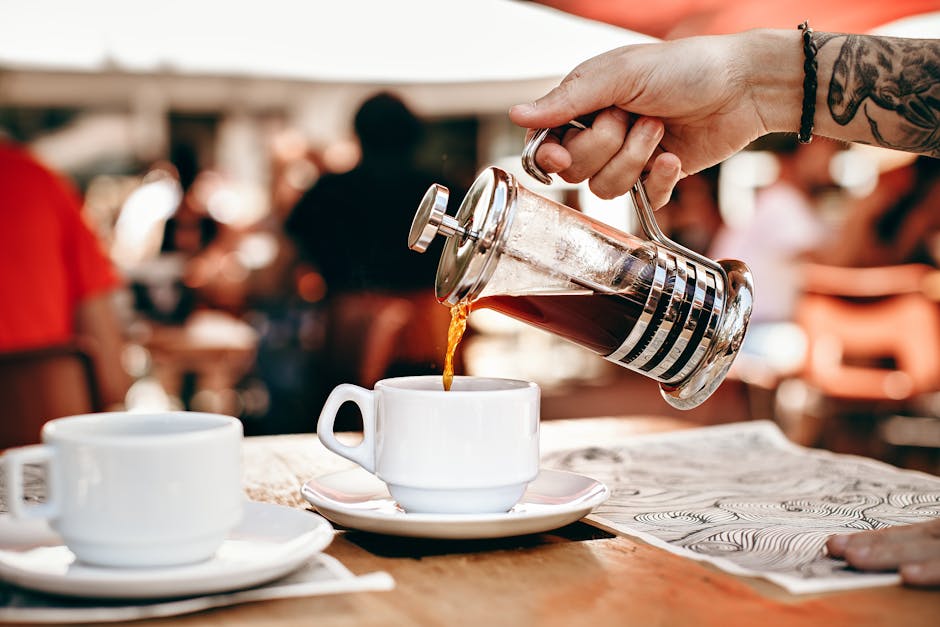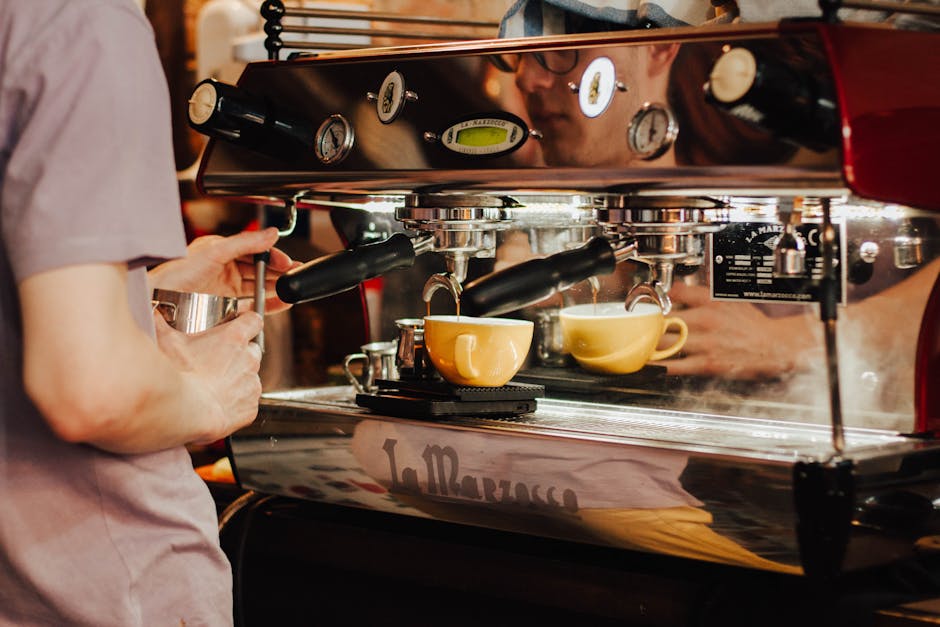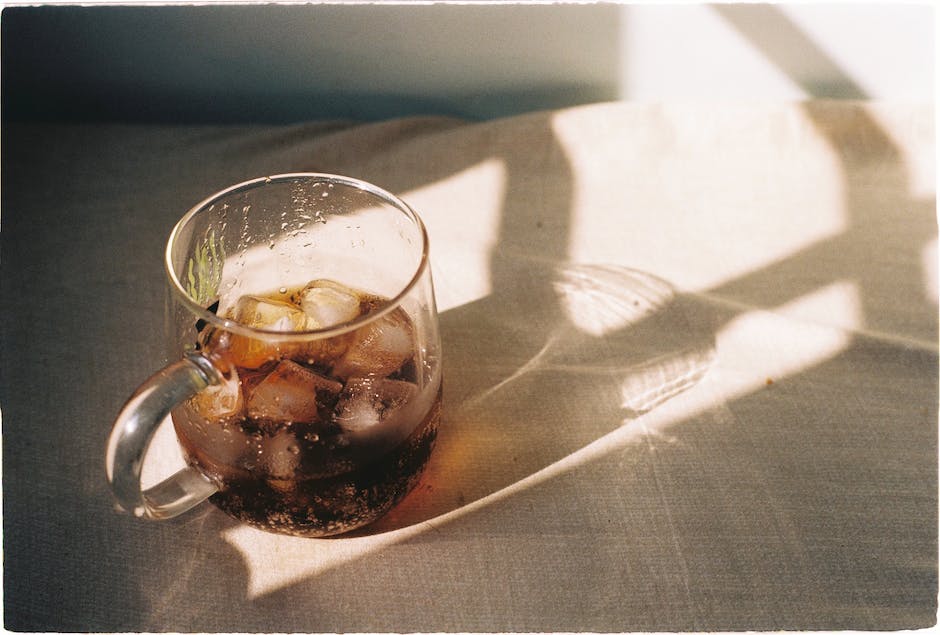What is cupping coffee and how is it done?


“Cupping – not just a ritual, but the art form that transforms the whispers of coffee into a symphony of flavor. Explore, experience and fully understand the story of your bean.”
An introduction to the world of coupling
Coffee cupping is a method used to systematically assess and taste the different qualities of coffee. This technique is central to coffee culture as it provides a deeper understanding of the complex characteristics, variables and potential of coffee. Coffee cupping gives producers, baristas, and coffee enthusiasts the opportunity to identify the unique characteristics of different coffee varieties and assess the quality of a coffee blend. It is a term that sums up different methods of coffee tasting and quality assessment.
Various people from the entire coffee chain join the cupping. These include growers who see their product become the final result, roasters who hone their techniques, and Q-graders, highly trained experts specialized in the sensory assessment of coffee. Even coffee enthusiasts who want to immerse themselves in the world of coffee often attend cupping sessions. Linkage provides all these actors with a valuable tool to assess and improve coffee, contributing to the continuous development and innovation of the coffee industry.
Step by step: How to carry out a clutch
To make a cup, you need to start with the right equipment and a carefully measured amount of coffee. The right degree of grinding is crucial; the coffee should be coarsely ground, as for a French press. A standard method of cupping involves freshly roasted coffee that is ground and poured into glasses with 200 ml of hot water. The temperature of the water should be just below boiling point to avoid destroying the delicate flavors in the coffee.
After the hot water is poured over the coarsely ground coffee, a crust forms on the surface, which after about four minutes should be broken with a special cupping spoon. This moment is crucial, as the breaking of the crust releases the coffee’s aromas, which are essential for assessing its quality. This is followed by the taste test. The technique of slurping the coffee is key; by drawing in air, the flavors of the coffee come together and the right experience can reach all parts of the taste buds.
A complete cupping includes preparations such as grinding the coffee, weighing, timing, and preparing cupping spoons, cupping glasses, water glasses for rinsing spoons, and note-taking utensils. This way, you can carefully document and compare each tasting.
Characteristics to look out for in coffee
During a cupping session, it is important to identify and assess elements such as flavor, acidity, sweetness, and the body of the coffee. The acidity should be pleasant and balanced; it is often what gives the coffee its life. The sweetness can range from being subtle to distinct and adds depth to the overall flavor profile of the coffee. The body of the coffee refers to its weight or mouthfeel, sometimes described as lightness or fullness.
Recognizing these characteristics requires training and experience. The goal is to build a personal reference library of flavors and aromas, which can be helped by using The Coffee Taster’s Flavor Wheel. It is a tool based on extensive research that helps tasters identify and describe sensory notes in coffee.
Cupping as an assessment tool and competition discipline
Cupping is much more than just a way to enjoy great coffee aromas. It is a powerful assessment tool used professionally by Q-graders. These are certified experts who use a cupping technique to assess and score coffee. A Q-grader is trained to identify and comment on the sensory characteristics of the coffee, where an accurate cup can take around 8 minutes.
Cupping is also a popular sport. The Cup Taster Championships test participants’ ability to distinguish between the subtlety and complexity of different coffee flavors. Competitors must rely on their cultivated sensory skills to differentiate and identify the finest coffees. Furthermore, the Cup of Excellence event, which is an annual competition where coffee varieties are cupped at least five times by Q-graders, provides important recognition to the best coffee growers. This competition raises the standard of quality and strengthens the status of coffee farmers in the global market.
The journey of the coffee grounds from cup to compost
After enjoying the coffee, there is more to do with the leftover coffee grounds than just throwing them away. Instead, they can be recycled and become a welcome addition to the compost or as fertilizer for plants. Coffee grounds are rich in nitrogen and other nutrients that can contribute to improved growth and health of plants.
Using coffee grounds as fertilizer not only supports a more sustainable lifestyle but also ensures the full life-cycle value of coffee farm products. It’s really resource-efficient and easy to integrate into regular gardening, with benefits for both your wallet and the environment.
The history of cupping and its impact on the coffee market
The cupping method has been used for over a century and originated from the need of coffee farmers to assess and ensure the quality of their products. Over the years, cupping has evolved from a simple test to a sophisticated and detailed procedure that is now standard in the coffee industry.
The tradition of cupping has had an immeasurable impact on the coffee market, where it has been crucial to the development of quality assessment and transparency. It is also the method used to determine which coffee roasters brew the best products and which coffee farmers grow the finest beans. Cupping has thus played a major role in shaping both consumer taste preferences and coffee farmers’ growing practices.
From the grower to your coffee cup
Cupping not only serves as a quality control for large roasters and distribution chains, it is also very helpful for small coffee farmers. Through professional linkage, these growers receive valuable feedback that can improve their products, increasing their chances of reaching the competitive market.
For coffee farmers, the possibility of direct trade and better prices for their products is a potentially life-changing aspect of cupping. It strengthens the ability of smallholders to independently develop their businesses, which in turn contributes to a fairer and more sustainable coffee industry globally.
In conclusion
Cupping is a fascinating and indispensable aspect of the coffee industry. It is not just a scientific method or a quality control tool, but an adventure and an invitation to explore more deeply the multidimensional world of coffee flavors. It also encourages further training, participation and cooperation throughout the chain from coffee farmer to consumer.
For coffee enthusiasts and professionals, cupping is both a passion and a discipline. It’s a journey that starts at the farmer’s farm and continues all the way to the finished cup in your hand. Learning cupping and understanding its importance will not only enhance your coffee experience, but also give you a profound appreciation for every step and every hand that worked to create the perfect cup. Why not start your own cupping journey today and explore the infinite flavor universe of coffee?

FAQ – What is cupping coffee and how is it done?
What does the cupping method mean in terms of coffee?
Cupping is a process of tasting and assessing the different qualities of coffee. It involves the systematic tasting of ground coffee mixed with hot water in order to identify and describe its flavors, aromas and other sensory characteristics. This helps coffee growers, roasters, baristas and coffee enthusiasts to understand and improve the quality of coffee.
How to prepare a clutch?
To prepare a cup, you need the right equipment and a measured amount of coarsely ground coffee. This includes coffee beans, a fine scale, timer, cupping glasses or cups, labeling materials, cupping spoons, a water glass for spoons, hot water, and note-taking materials. The coffee is ground, weighed and then poured into the glasses where it is to be mixed with 200 ml of hot water, and after about 4 minutes you break the crust formed on top of the coffee with the cupping spoons.
What is a Q-grader?
A Q-grader is an expert in coffee sensory analysis and has undergone official training to certify in coffee quality assessment and scoring. They are trained to identify, comment on and assess the flavor profiles and individual characteristics of coffee by cupping. A thorough coupling performed by a Q-grader normally takes about 8 minutes.
What are Cup Taster Championships and Cup of Excellence?
The Cup Taster Championships is an annual competition where participants test their ability to distinguish subtle flavor differences between different coffee blends, while the Cup of Excellence is another prestigious competition where the best coffees are cupped by Q-graders and the top coffees are rewarded. Both competitions are based on the participants’ skill in sensory analysis through cupping.
How can you reuse ground coffee after brewing?
The ground coffee left over after a cup can be reused as fertilizer for plants. Coffee grounds are rich in nitrogen and nutrients which can improve the growth and health of plants. Incorporating coffee grounds into compost or directly into the soil provides a more sustainable lifestyle and gives the coffee product a full life cycle value.

Photo by cottonbro studio on Pexels
Photo by Jakub Zerdzicki on Pexels
Photo by cottonbro studio on Pexels
Continue reading
-

Pregnant and decaffeinated: safe for you and the baby?
“Decaf during pregnancy: A safe guide for expectant mothers” Decaffeination during pregnancy is an important issue for many. Pregnancy affects the body’s ability to break…
-

Coffee and health: anti-inflammatory or villain?
**Coffee and Inflammation: A Complex Relationship** Coffee is one of the world’s most widely consumed beverages and contains antioxidants that can reduce inflammation and protect…
-

Coffee and weight – are you getting the balance right?
Coffee and weight – Find your edge without tipping the scales Coffee and weight is a hot topic in health. Black coffee, with its low…
-

The truth about decaf – is it really good?
The truth about decaffeinated coffee: Is decaffeinated coffee good for you? Decaffeinated coffee is a healthy option for those who want to avoid the negative…
-

Coffee acidity: health and taste perception
The acidity of the coffee is influenced by its pH value, which is between 4.85 and 5.10. Is coffee sour? Yes, and this is due…
-

Pre-exercise coffee – does performance increase with each cup?
Drinking coffee before exercise can improve both strength and endurance, thanks to the stimulating effects of caffeine on the central nervous system. For best results,…
-

Coffee and antioxidants: your healthy cup?
**Coffee and antioxidants: a healthy cup Coffee is one of the major sources of antioxidants in Western diets, which can help reduce the risk of…
-

Turmeric in coffee – a health boost in your cup
Turmeric in coffee has become a popular trend among health enthusiasts thanks to its anti-inflammatory and antioxidant properties. Adding turmeric to your coffee can improve…
-

Roast for body in the coffee
Body in coffee refers to the fullness and mouthfeel of the coffee. It is influenced by brewing methods such as French press and espresso, as…
-

The role of coffee in the quest for a longer life
Coffee is a popular morning ritual that not only increases alertness but also contributes to a longer life. Studies show that coffee, rich in antioxidants,…
-

Coffee and health: upgrading your coffee with superfoods
**Coffee and Health: Upgrade your coffee with superfoods** Give your coffee a health boost by adding superfoods such as cinnamon, ginger, mushrooms, turmeric, maca and…
-

Is coffee dehydrating or hydrating?
**Is coffee dehydrating or hydrating? Coffee is one of the world’s most loved drinks, but is it dehydrating? Research shows that moderate coffee consumption (1-2…
-

Enjoy and feel better: 9 unexpected benefits of coffee
**Your health in a coffee cup: Benefits of coffee** Coffee, a global favorite beverage, offers many health benefits that are often overlooked. In addition to…
-

Taste guide: Detecting roasting defects in your coffee cup
Detect roasting defects in the coffee cup and improve the taste experience of the coffee. Learn to identify common defects such as underdevelopment, baked taste,…
-

The home roaster’s guide to the right green coffee
Discover the adventure of green coffee and learn how to roast at home with our comprehensive guide to buying the right green coffee. Understand the…
-

All about how coffee is harvested
A journey through the coffee harvest describes in detail how coffee is harvested, from ripe coffee berries to finished beverage. Harvesting is mainly done by…
-

Exploring third wave coffee
**From the origin of the bean to your coffee barrel: A journey with third wave coffee** The coffee industry is a global giant, covering everything…
-

Coffee with balance: decaf vs low-caf
Low-caf coffee offers a balanced solution for coffee lovers who want to avoid the negative effects of caffeine. While traditional coffee and decaf often have…
-

How to turn coffee beans into decaffeinated coffee
### How to turn coffee beans into decaffeinated coffee Decaffeinated coffee, or decaffeinated coffee, removes the majority of caffeine from the beans to avoid negative…
-

Refine your brewing art by blooming your pour over coffee
Optimize the taste of your coffee with the art of bloom pour over coffee. Flowering of coffee is a crucial step to release gases and…
-

Create a unique brand for your café – here’s how!
Creating a strong café brand means defining your ‘why’ and mission to stand out from the crowd. By integrating core values like sustainability and community…
-

Should I use different coffee filters for different roasting profiles?
Discover how coffee filters affect the taste experience! Using the right coffee filter is essential to bring out the unique flavors of each coffee variety.…
-

How to make an espresso martini at home
“Create the perfect espresso martini at home with simple ingredients like vodka, coffee liqueur, fresh espresso and simple syrup. Rooted in 1980s London, this classic…
-

Lungo: when espresso takes a bigger leap
Lungo is a coffee drink that is gaining ground in Sweden, a milder espresso with extended brewing time that provides a larger amount of coffee…
-

The charms of the Perculator – a coffee experience like no other
Experience the rich flavor of percolator coffee, a traditional brewing method that offers depth and complexity. The perculator is quick and easy, perfect for busy…
-

Do you know the coffee berry?
Discover the importance of coffee berries in the coffee flavor journey, from lush plantations to your cup. Learn about the different layers of the berry,…
-

Headache from coffee: 6 unexpected reasons
Discover the causes of coffee headaches, from caffeine withdrawal to overdose and caffeine allergy. Coffee can cause both concentration and headaches, with withdrawal symptoms and…
-

Arabica coffee beans – a world of flavor variations
Arabica coffee beans offer coffee lovers a wealth of flavors thanks to its diverse varieties such as Bourbon, Typica and Geisha. These beans, which dominate…
-

Flavor development during roasting: the magic of the griddle effect
The grinding effect is central to the transformation of the coffee bean during roasting, creating hundreds of aroma compounds that make the coffee rich and…
-

Top tips for making French press coffee
Discover the art of brewing perfect French press coffee by selecting fresh coffee beans, achieving the ideal grind and balancing the coffee-water ratio for a…
-

Attracting more café guests – your guide to a vibrant meeting place
Welcome all café guests to a place where the details create a unique atmosphere. To successfully attract visitors, cafés should strengthen their digital presence and…
-

How to use different cups for different coffees
Discover how cups for coffee can change your taste experience. Research shows that the shape of the cup affects the aroma, sweetness and acidity of…
-

Ristretto – Italy’s flavorful little guy
In Italy, ristretto is more than just coffee; it is a concentrated pleasure and part of the culture. This intense espresso variant is characterized by…
-

Storing coffee beans properly: guide and tips
Learn how to store coffee beans optimally to preserve flavor and freshness. Avoid air, moisture, heat and light with airtight, dark containers and the right…
-

Growing coffee in Uganda: one bean’s journey to perfection
Uganda, a leading coffee producer, offers a wealth of flavors from the nutrient-rich red soil. The country is known for its Arabica and Robusta coffees,…
-

Coffee giant Brazil: a deep dive into the kaleidoscope of culture
Brazil is not only known for its culture of music and carnival, but it is also a global coffee giant whose coffee traditions go back…
-

Clean your coffee grinder like a pro – for flavor
Regular cleaning of the coffee grinder is essential for an optimal coffee experience. An unclean grinder negatively affects the taste through the accumulation of old…
-

Flat white – more than just milk and coffee
More than just milk and coffee, flat white is a global coffee experience that originated in Australia and New Zealand, and has captured the hearts…
-

A deep dive into the world’s oldest brewing method
Discover the ancient art of coffee, where traditional tools like the cezve and ibrik represent the oldest brewing method for coffee, a deep-rooted tradition celebrated…
-

How to make cold brew coffee at home
Enjoy a flavorful coffee experience with cold brew coffee, a popular brewing method that produces a mild and low-acid beverage, perfect for hot days. Unlike…
